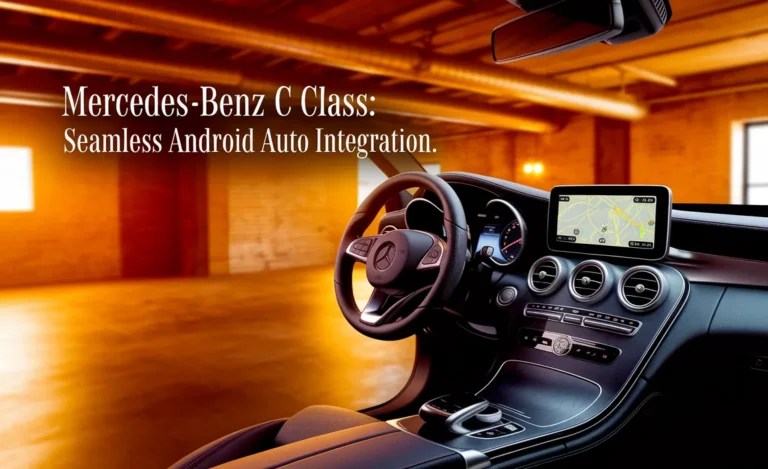Mercedes-Benz C-Class Bridgestone: Your Ultimate Drive
The Bridgestone tires most commonly found on Mercedes-Benz C-Class models offer a superb balance of performance, comfort, and longevity, ensuring your “Ultimate Drive” is smooth, safe, and exhilarating. Choosing the right tires is crucial.
The Mercedes-Benz C-Class is renowned for its luxurious ride, sharp handling, and sophisticated engineering. To truly experience its capabilities, the tires you choose play an absolutely vital role. Often, when you drive a new C-Class off the lot, it’s equipped with Bridgestone tires, and for good reason. Bridgestone is a leading tire manufacturer that consistently engineers products to meet the high standards set by brands like Mercedes-Benz.
If you’re wondering what makes these tires a great fit for your C-Class, or if you’re considering an upgrade, you’ve come to the right place. We’ll delve into why Bridgestone is frequently selected and what benefits these tires bring to your everyday driving and spirited journeys. Get ready to unlock the full potential of your C-Class with the right understanding of its shoe choice.

Understanding the C-Class and Its Tire Needs
Your Mercedes-Benz C-Class is a masterful blend of sportiness and luxury. It’s designed to deliver a comfortable ride for daily commutes while also offering engaging performance for winding roads. This duality means its tires need to perform a delicate balancing act. They must provide exceptional grip for confident cornering, responsive steering, and firm braking, especially in wet conditions.
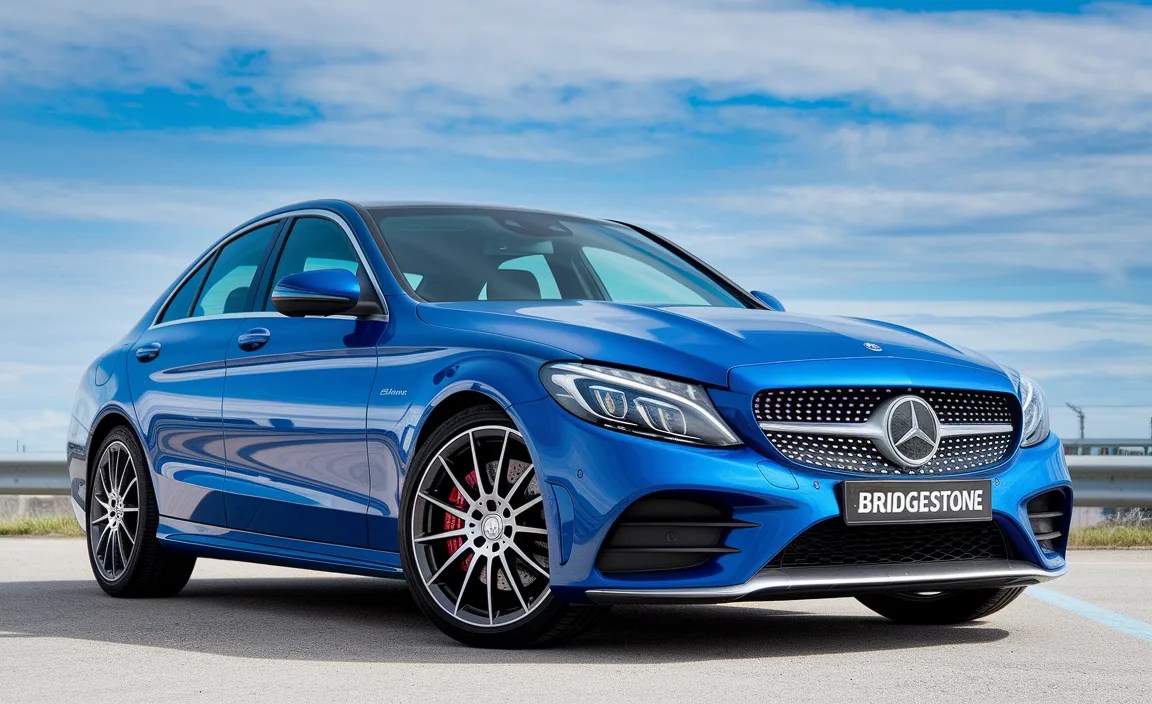
Simultaneously, they need to absorb road imperfections to maintain that signature C-Class refinement and offer a quiet, smooth experience. This is where a tire manufacturer with a deep understanding of automotive engineering, like Bridgestone, comes into play. Mercedes-Benz meticulously tests and selects tires that complement specific vehicle characteristics. For the C-Class, this often translates to tires that offer a harmonious blend of:
- Performance Grip: Ensuring precise handling and stability.
- Comfort and Quietness: Minimizing road noise and vibration for a serene cabin.
- Durability: Providing a long tread life to reduce replacement frequency.
- All-Season Capability: Offering reliable performance in various weather conditions.
- Fuel Efficiency: Contributing to optimal MPG through low rolling resistance.
When you see “Bridgestone” on the sidewall of your C-Class’s tires, it’s a strong indicator that these requirements have been met by the manufacturer.
Bridgestone’s Commitment to Automotive Excellence
Bridgestone Corporation is one of the world’s largest tire and rubber companies, with a rich history of innovation and a relentless pursuit of quality. Founded in 1931 in Japan, Bridgestone has grown into a global powerhouse, supplying tires for a vast range of vehicles, from small passenger cars to high-performance sports cars and heavy-duty trucks. Their commitment to research and development is exceptional, allowing them to pioneer technologies that enhance tire safety, performance, and sustainability.
For luxury vehicles like the Mercedes-Benz C-Class, Bridgestone often develops specific tire lines or even makes variations that are exclusive to original equipment (OE) manufacturers. These OE-spec tires are designed and tuned in collaboration with Mercedes-Benz engineers to perfectly match the dynamic characteristics of the C-Class. This ensures that when you buy a new C-Class, it comes equipped with tires that have been validated to deliver the expected driving experience – a true testament to the partnership between the two brands.
Key Bridgestone Technologies
Bridgestone incorporates several advanced technologies into their tires, many of which can be found on C-Class fitments. These technologies are designed to provide tangible benefits to the driving experience:
- Run-Flat Technology (RFT): Some Bridgestone tires for the C-Class may feature RFT, allowing you to continue driving for a limited distance and speed even after a puncture. This enhances safety and convenience, removing the immediate need to change a tire roadside.
- Advanced Tread Compounds: Bridgestone utilizes specialized rubber compounds that are engineered for optimal grip in both dry and wet conditions, while also balancing wear resistance for longevity.
- Optimized Tread Design: The pattern of the tire’s grooves and sipes is crucial. Bridgestone’s designs are often optimized to reduce road noise, improve water evacuation (hydroplaning resistance), and enhance traction.
- Oversized Center Rib: Some designs feature a continuous center rib that enhances steering response and stability, contributing to the C-Class’s precise handling characteristics.
Common Bridgestone Tire Models Found on C-Class
While specific tire models can vary based on the C-Class generation, model year, and regional specifications, several Bridgestone lines are frequently specified as original equipment for the Mercedes-Benz C-Class. Understanding these can help you identify what’s currently on your car or what to look for when replacing them.
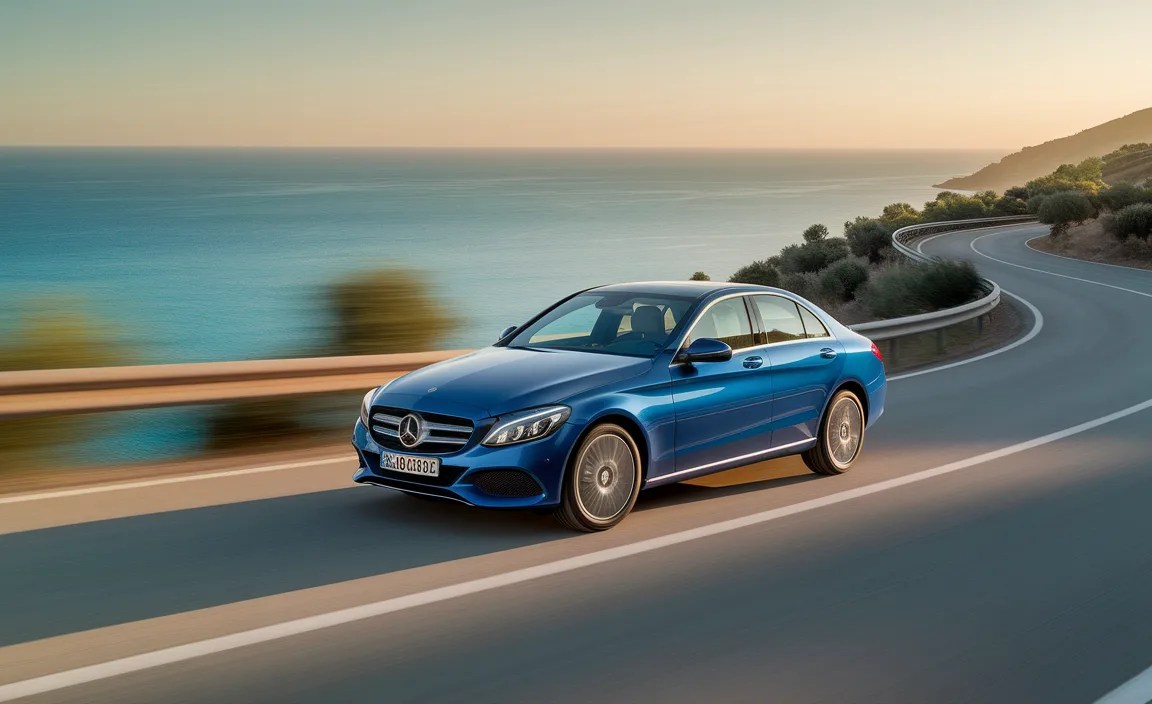
Here are some common families and specific models you might encounter:
Potenza Series
The Bridgestone Potenza line is Bridgestone’s performance-oriented range. Tires in this series are engineered for sporty vehicles that demand sharp handling, excellent braking, and a responsive connection to the road. For a C-Class, Potenza tires typically emphasize exhilarating dry performance while still offering acceptable wet-weather capabilities. They are designed to complement the agile nature of the C-Class, particularly in sportier trims.
- Bridgestone Potenza S001 / S002: Often found on high-performance sedans and coupes, these tires offer a superb balance of dry grip, steering precision, and ride comfort. They are a popular choice for the C-Class when sporty driving is a priority.
- Bridgestone Potenza RE050 A: Another performance-oriented tire known for its strong grip and responsive handling. It’s designed to handle high speeds with confidence and provide excellent road feedback.
Turanza Series
Bridgestone Turanza tires are typically geared towards luxury touring and all-season performance. They aim to provide a quieter, more comfortable ride than performance-oriented tires, without sacrificing too much in terms of handling and safety. If your C-Class prioritizes a refined and serene driving experience, it might be fitted with Turanza tires.
- Bridgestone Turanza T001 / T005: These are excellent examples of all-season touring tires. They offer a great balance of ride comfort, low noise, durability, and reliable traction across a wide range of conditions, including light snow. They are a common OE fitment for comfort-focused luxury sedans.
- Bridgestone Turanza ER300: A well-regarded touring tire that provides a smooth, quiet ride along with stable handling. It’s designed to provide confidence in everyday driving scenarios.
Other Potential Fitments
Depending on the specific market or model variant, other Bridgestone tires might also be used. These could include variations or other established models that meet Mercedes-Benz’s stringent OEM requirements. Always check the tire’s sidewall for its exact model name.
How to Identify Your C-Class’s Bridgestone Tires
Identifying the exact Bridgestone tires on your Mercedes-Benz C-Class is straightforward and essential for maintenance and replacement. You’ll find all the necessary information molded into the sidewall of each tire.
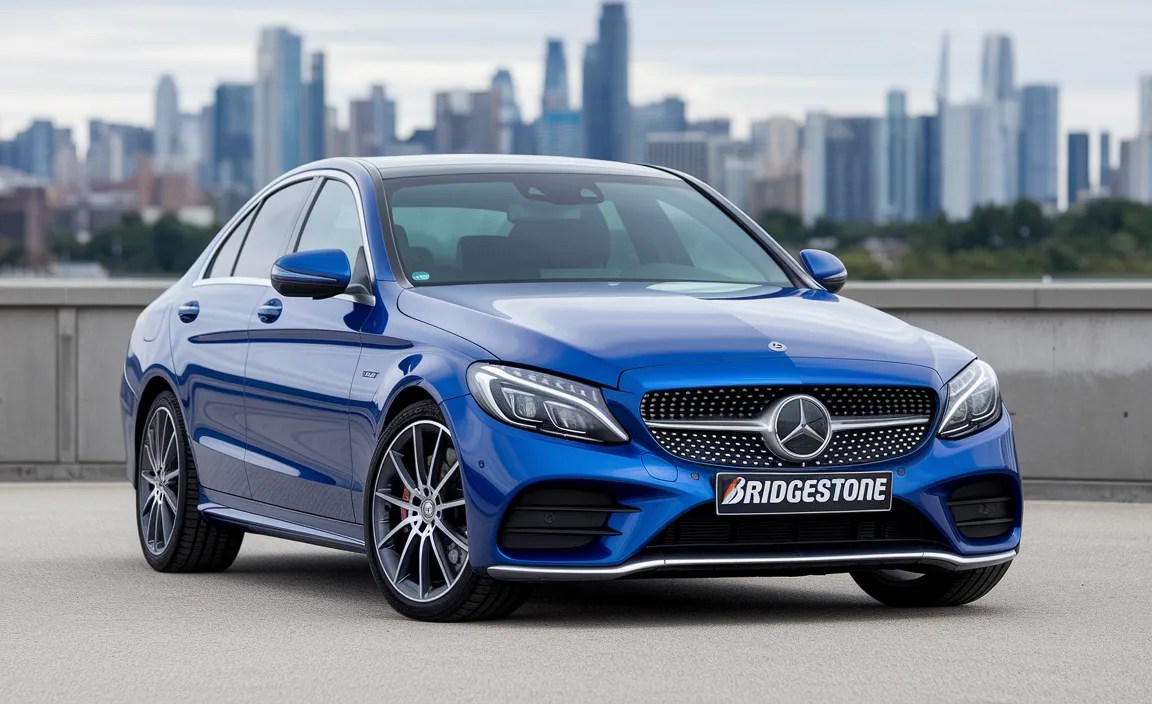
Reading the Sidewall Information
Let’s break down what you’ll see:
- Brand Name: “BRIDGESTONE” will be prominently displayed.
- Tire Model: Look for names like “POTENZA,” “TURANZA,” “ECOPIA,” or specific series numbers (e.g., “S001,” “T005”).
- Tire Size: This is a crucial code, for example, “225/50 R17 94W”.
- 225: Tire width in millimeters.
- 50: Aspect ratio (the tire’s sidewall height as a percentage of its width).
- R: Radial construction.
- 17: Wheel diameter in inches.
- 94: Load Index (indicates the maximum load the tire can carry – your C-Class’s manual or doorjamb sticker will provide the correct index).
- W: Speed Rating (indicates the maximum speed the tire can sustain – the manual or sticker will also specify this).
- Treadwear, Traction, Temperature Ratings (UTQG): These are usually found on a separate label within the sidewall information, such as “600 A A”.
- Treadwear: A comparative rating of longevity (higher numbers generally mean longer life).
- Traction: “AA” (best), “A”, “B”, “C” (wet grip performance).
- Temperature: “A” (best), “B”, “C” (resistance to heat buildup at speed).
- OE Markings: Sometimes, you might find a specific marking indicating it’s an original equipment tire. For Mercedes-Benz, this could be an “MO” (Mercedes Original) or “MO Extended” marking. This signifies that the tire has been specifically approved and tuned by Mercedes-Benz for their vehicles.
Example Sidewall:
Imagine you see:
BRIDGESTONE POTENZA S001 MO 225/45 ZR18 95Y XL
This tells you:
- It’s a Bridgestone Potenza S001 model.
- The “MO” indicates it’s a Mercedes-Benz Original Equipment specification.
- The size is 225mm wide, 45 aspect ratio, for an 18-inch wheel.
- “ZR” indicates a speed rating over 150 mph (for high-performance tires, often grouped).
- “95” is the load index, and “Y” is the speed symbol, exceeding the common W rating.
- “XL” means “Extra Load,” indicating a higher load capacity than a standard tire of the same size.
When to Replace Your C-Class Bridgestone Tires
Tires are a critical safety component, and knowing when to replace them is paramount. Several factors indicate it’s time for a change, even if they are high-quality Bridgestones.
Tread Depth
The most common indicator is wear to the tread. The legal minimum tread depth in many regions is 1.6 mm (2/32 of an inch). However, for optimal safety and performance, especially in wet conditions, it’s advisable to replace tires when the tread depth reaches:
- 3 mm (4/32 inch) for all-season and touring tires.
- 4 mm (5/32 inch) for performance tires.
Most tires have tread wear indicator bars molded into the grooves. When the tread surface is level with these bars, it’s time for replacement. You can also use a tire tread depth gauge, a simple and inexpensive tool available online or at auto parts stores. You can find an authoritative guide on tread depth from the National Highway Traffic Safety Administration (NHTSA).
Age of Tires
Rubber degrades over time, regardless of tread wear. Tires older than 6-10 years should be inspected by a professional, and those over 10 years old should generally be replaced, even if they appear to have plenty of tread. The date of manufacture is molded into the sidewall as a four-digit DOT code (e.g., “3222” means the tire was made in the 32nd week of 2022).
Visible Damage
Cracks, cuts, bulges, or punctures on the sidewall or tread are serious signs of damage. If you notice any of these, the tire should be replaced immediately, as it may be structurally compromised.
Performance Degradation
If you notice a significant decrease in grip, increased braking distances, or more frequent instances of hydroplaning, your tires’ performance may have degraded, even if they haven’t reached the minimum tread depth.
Pros and Cons of Bridgestone Tires on the C-Class
Like any automotive component, Bridgestone tires come with their own set of advantages and potential drawbacks when fitted to a Mercedes-Benz C-Class.
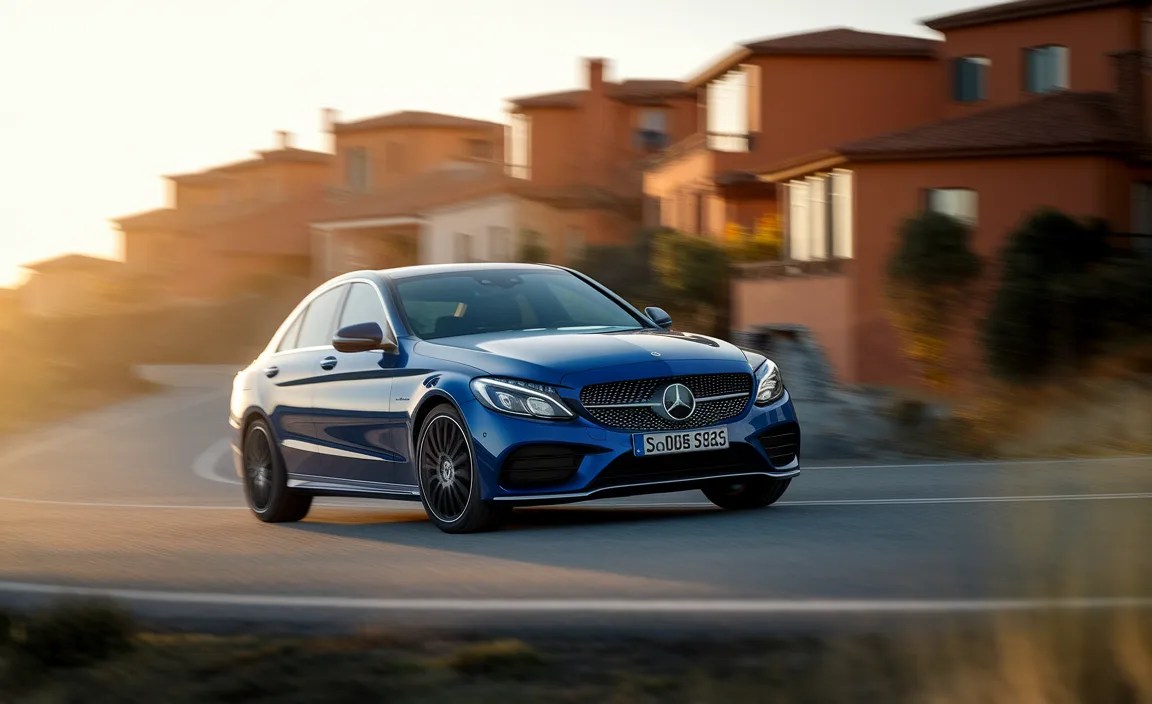
Pros:
- Excellent OE Fitment: As an original equipment supplier, Bridgestone tires are specifically engineered and tested to meet Mercedes-Benz’s rigorous standards, ensuring they complement the C-Class’s driving dynamics.
- Performance Versatility: Bridgestone offers various lines (Potenza for sport, Turanza for touring) that cater to different C-Class driving expectations, from spirited drives to comfortable commutes.
- Advanced Technology: Features like run-flat capability, advanced tread compounds, and noise-reduction designs contribute to safety, comfort, and convenience.
- Durability and Longevity: Many Bridgestone models offer competitive tread life, providing good value over time.
- Wet and Dry Grip: Generally, Bridgestone tires provide reliable traction across a range of conditions, crucial for a luxury vehicle’s safety.
Cons:
- Cost: As a premium tire brand often specified by luxury automakers, Bridgestone tires can be more expensive than some economy or mid-range brands.
- Specifics Matter: Not all Bridgestone tires are created equal. A base model Potenza might offer a different experience than a high-performance variant, and confusion can arise if the exact OE specification isn’t maintained.
- Run-Flat Trade-offs: While convenient, run-flat tires can sometimes be heavier, slightly reduce ride comfort, and be more expensive to replace.
Tips for Maintaining Your Bridgestone Tires
To get the most out of your C-Class’s Bridgestone tires and ensure optimal performance and safety, proper maintenance is key. Here are some essential tips:
- Regular Tire Pressure Checks: Incorrect tire pressure is a leading cause of premature wear, reduced fuel economy, and compromised handling. Check your tire pressure at least once a month and before long trips. The recommended pressure for your C-Class can be found on the sticker inside the driver’s side doorjamb or in your owner’s manual. Always inflate when tires are cold.
- Tire Rotation: To ensure even wear across all tires, they should be rotated at regular intervals, typically every 5,000-8,000 miles (8,000-12,000 km). This helps maximize tread life and maintain consistent handling. Your owner’s manual or a performance shop can advise on the correct rotation pattern for your C-Class.
- Wheel Alignment: Improper alignment can cause uneven tire wear, pulling to one side, and reduced fuel efficiency. It’s recommended to have your alignment checked periodically, especially after hitting a pothole or curb, or if you notice any steering issues. A misalignment can severely impact tire life. If you suspect issues, a professional alignment service is crucial for maintaining your C-Class’s precise handling.
- Balancing: Tires and wheels need to be balanced to distribute weight evenly. Unbalanced wheels can cause vibrations, making the ride uncomfortable and leading to uneven tire wear. Tires should be balanced when they are mounted and periodically checked.
- Visual Inspection: Regularly inspect your tires for any signs of damage, such as cuts, bulges, or foreign objects embedded in the tread. Address any concerns immediately.
- Driving Habits: Avoid aggressive acceleration, hard braking, and sharp cornering, especially on dry or wet surfaces, as these habits significantly increase tire wear.
Tire Pressure Monitoring System (TPMS)
Your C-Class is equipped with a Tire Pressure Monitoring System (TPMS) that alerts you if a tire’s pressure is significantly low. While this is a valuable safety feature, it should not replace manual pressure checks. Batteries in TPMS sensors can eventually die, and the system is designed to alert you to a low tire, not necessarily to maintain optimal pressure.
Bridgestone vs. Competitors for the C-Class
While Bridgestone is a top-tier choice, it’s helpful to know how they stack up against other premium tire manufacturers that might also be specified for the Mercedes-Benz C-Class. Brands like Michelin, Continental, Pirelli, and Goodyear are also frequent OE suppliers.
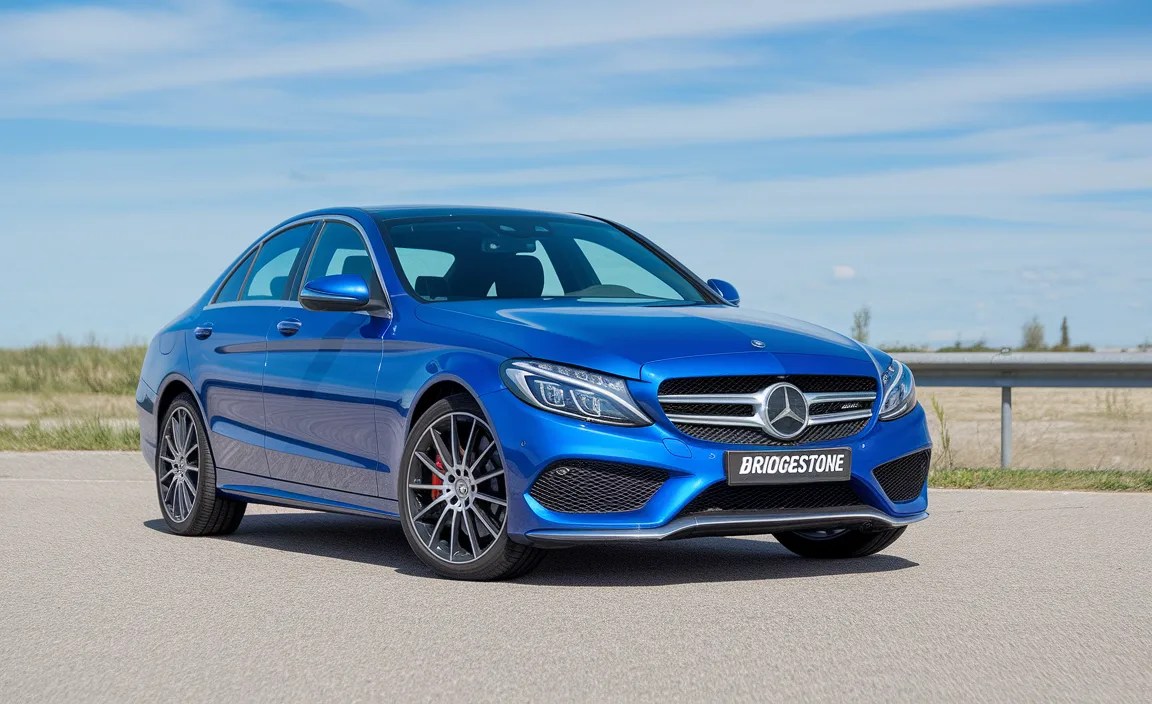
| Brand | Strengths for C-Class | Potential Considerations |
|---|---|---|
| Bridgestone | Excellent OE integration, strong balance of performance and comfort, technological advancements (e.g., RFT). | Can be on the pricier side; specific models vary widely in focus. |
| Michelin | Renowned for longevity, exceptional wet grip, and often praised for ride refinement and quietness. | Typically among the most expensive options; some performance models might prioritize grip over treadwear. |






